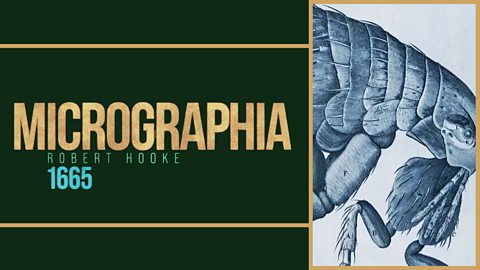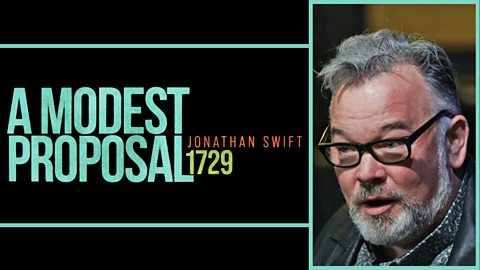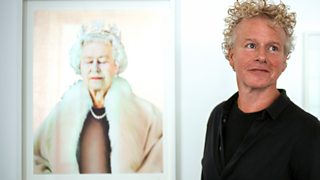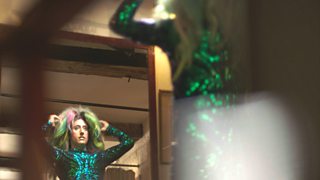Saxons to Stormzy: Nine radical moments that defined their era
20 December 2022
Art That Made Us – streaming now on iPlayer – is one of the highlights of 2022. The ambitious eight-part series reveals how creative works have shaped the diverse story of the British Isles. From warrior tales of medieval Welsh resistance through to Stormzy's iconic Glastonbury headline show, here are nine moments from the series that capture dramatic moments of change.


1. Y Gododdin
The fact that Y Gododdin is 14 centuries old now... is something that moves and echoes through our history in Wales.Michael Sheen
Y Gododdin or The Gododdin is a poem attributed to an early Welsh bard called Aneirin. It is preserved in a 13th century manuscript.
The people of the Gododdin are survivors of the cultures which resists the encroaching Anglo-Saxons all across lowland Britain. The cultural ancestors of the modern Welsh.
And this poem is a lament to their doomed struggle. It's a poem all about the glory of losing well rather than winning badly.
Here is Welsh actor Michael Sheen reading an excerpt from this epic, and discussing how it feels to read it aloud.

“It actually sends shivers down your spine”
Michael Sheen performs Y Gododdin, a 7th-century Welsh poem of resistance.
The clip is from the opening episode in the Art That Made Us series, which begins with an exploration of the turbulent era that followed the Roman occupation of Britain.
Sculptor Antony Gormley meets Spong Man, a unique clay figure that once sat on a 5th-century funerary urn. Artist Cornelia Parker investigates why the gold artefacts of the Staffordshire Hoard were found so broken and twisted. And the Rev Richard Coles explores the elaborate Lindisfarne Gospels.
We also delve into epic poem Beowulf, the Anglo-Saxon Mappa Mundi, and take a fresh look at the embroidered propaganda of the Norman conquest in the Bayeux Tapestry.
-
![]()
Lights in the Darkness
In this alternative history of the British Isles, working artists explore an era once known as the 'dark’ ages, finding mysterious art that haunts our landscapes and imagination.

2. The Book of Margery Kempe
The first autobiography in English is written in the 15th century by the spirited pilgrim and mystic Margery Kempe.
Sir, you shall wish someday that you had wept as hard as I.The Book of Margery Kempe
Margery has had fits and visions ever since the birth of her first child, possibly suffering from what we now recognise as post-natal depression.
She undergoes a spiritual conversion, and that's the point at which her book begins.
It is a tell-all account of pilgrimages to shrines around Britain and beyond, and the many scrapes that "the creature", as she calls herself, has with religious authorities.

Margery Kempe: 15th Century Pilgrim in Conflict with Religion
The rebellious medieval mystic Margery Kempe writes the first autobiography in English.
The above clip is from episode two, which presents an alternative history of the Black Death of the Middle Ages and its bitter – but profoundly creative – aftermath.
Contemporary artists and performers, alongside historians and curators, reveal how a century of creative renewal emerged from the chaos of plague.
Writing in English was revived by works including Geoffrey Chaucer’s The Canterbury Tales and William Langland’s angry satire The Vision of Piers Plowman, as well as breakthrough works by women such as Margery Kempe.
-
![]()
Revolution of the Dead
From the chaos of the Black Death comes creative renewal - survivors finding their voice through satire and a revived literature in English, including breakthrough works by women.

3. The Penicuik Jewels
In the 16th century, the British Isles experiences a religious revolution, as the kingdoms of England and then Scotland turn Protestant.
Over the centuries some of the strongest women, from some of the biggest dynasties, have been empowered by jewels.
During the reign of Elizabeth I, Protestants and Catholics use art, language and new technology to wage a battle for power in the Isles.
Elizabeth has a dangerous rival in Mary Queen of Scots, who promotes her brand through jewels and fine Scottish gold work.
Created amid political and religious turmoil, the Penicuik Jewels are both a demonstration of beautiful craft and emblematic of a pivotal point in British history.

Mary Queen of Scots' intricate gold locket
Jeweller Shaun Leane investigates the story of Mary Queen of Scots' jewellery.
In episode three, artists and experts examine some of the many surprising and often radical works that arose out of this religious revolution.
Author Stephanie Merritt reassesses John Foxe’s grisly Book of Martyrs as a work of history and nationalist propaganda, while textiles artist James Merry explores the mysterious Barton Altar Cloth, now believed to be a fragment of one of Elizabeth’s power dresses seen in one of her many portraits.
Artist Alice Kettle assesses Mary Queen of Scots' embroideries and the coded messages in them that would contribute to her downfall.
As Elizabeth expands exploration and empire in the 1590s, artist Phoebe Boswell analyses Shakespeare’s attitude to race in his play Othello, supported by performances from actor Martins Imhangbe.
-
![]()
Queens, Feuds and Faith
The religious revolution of the 16th century creates radical and surprising works of art.

4. Robert Hooke's Micrographia
The growth of a scientific mindset in the era of the Stuart kings manifests itself in creative works such as Robert Hooke's Micrographia.
Robert Hooke’s Micrographia is your ultimate science coffee table book, and it's a bestseller. Extraordinary drawings.
It is the first book that represents images taken under a microscope, and it forever changes people's perception of the natural world.
A largely self-taught polymath, Hooke is a rival of Sir Isaac Newton.
He uses the latest technology to produce work that marries art with science, and is a true as possible to his subject.

Up-close with Robert Hooke's Micrographia
Artist Angela Palmer takes a closer look at the first microscopic images by Robert Hooke.
Episode four looks at how a splintering of politics and religion in the British Isles under the Stuart kings leads to more questioning art, new science and architecture.
Architect Amanda Levete climbs the Tulip Stairs in the Queen’s House, Greenwich, and reassesses Inigo Jones’ elegant and innovative design, while sculptor Thomas Heatherwick reveals the brilliant architectural deceptions in Christopher Wren’s dome of St Paul’s.
-
![]()
To Kill a King
A splintering of politics and religion in the British Isles under the Stuart kings leads to more questioning art, new science and architecture.

5: Philip Herbert, 4th Earl of Pembroke, and his Family by Anthony van Dyck
The Stuarts don't just buy into the European style - they import an artist who will redefine British art.
Painting in England with a level of skill no native artists can touch, Anthony van Dyck creates extraordinary portraits of the rich and famous.
Trained under the great Flemish master Rubens, he is appointed court painter to Charles I in 1632.
His monumental 1635 portrait of the Earl of Pembroke’s family demonstrates scale and ambition that also manages to capture the turmoil of the era.

“You can see why Van Dyck blew people's minds”
The scale and ambition evident in a monumental 1635 family portrait by Anthony van Dyck.

6. A Modest Proposal by Jonathan Swift
Jonathan Swift's A Modest Proposal is a bitter satire aimed at what he sees as the callous treatment of the poor in Ireland in the 18th century.
I think Swift is a disappointed idealist.Stewart Lee
It is based on the kind of pamphlet that was popular in coffeehouses at the time.
Having established the premise of how much meat costs and how much it costs to raise a child, Swift's prose takes an absurd and macabre turn.
Written in the style of political proposals of the time, he suggests that a young healthy child is "a most delicious, nourishing and wholesome food, whether stewed, roasted, baked or boiled".

“He seems to be suggesting that boys should be hunted like deer”
Comedian Stewart Lee and actor Jason Isaacs explore Jonathan Swift's daring satire.
Episode five episode traces the story of Britain during the 18th century, a period that saw an explosion of creativity and a country with enough money, from trade and conquest, to pay for it.
But the money had a dark side: sculptor Thomas J Price visits Harewood House to see the elaborate Robert Adam-designed interiors, Joshua Reynolds portraits and Thomas Chippendale furniture that were paid for by the slave trade.
As Swift's A Modest Proposal shows, this was also the great age of mockery, and artist Lubaina Himid reflects on William Hogarth’s scabrous exposure of upper-class hypocrisies.
-
![]()
Consumers and Conscience
In the 18th century, trade and conquest funds an explosion of creativity, and art stirs a growing social conscience.

7. William Morris’ wallpapers
William Morris strived to bring nature back into Victorian homes via his hand-crafted wallpaper designs.
This has personality. It's beautiful.Jeremy Deller
One of the most influential artists of the era, Morris saw his objects such as stained glass and furniture as a way of introducing art into people's everyday lives.
As an antidote to the Industrial Revolution, his designs took inspiration from the medieval world and emphasised handmade artistry over machinery at every turn.

“The most influential artist of the Victorian era”
Artist Jeremy Deller celebrates the vivid wallpapers designed by William Morris.
The decisive shift of power from countryside to the city during the 19th century is charted in episode six.
With the industrial revolution transforming the British Isles, a divide opened up between city and country, forcing artists to respond to the upheaval to lives and the landscape.
Artists and experts explore the influence of JMW Turner, Elizabeth Gaskell and Alexander 'Greek' Thomson; writer and drag performer Amrou Al-Kadhi explores the meaning and inspiration of Oscar Wilde’s writing, and artist Shani Rhys James reflects on the quiet anger that simmers underneath Walter Sickert’s Camden Town Nudes.
-
![]()
Rise of the Cities
The industrial revolution forces artists to respond to upheaval in life and the landscape.

8. Barbara Hepworth's Contrapuntal Forms
Sculptor Barbara Hepworth tried to make sense of war by reaching for beauty in abstract human forms, as a vision of technological and cultural renewal was laid out for 1951's Festival of Britain.
Of the more than 600 sculptures that Hepworth made over her 50-year career, Ryan Gander has chosen this one as an exemplar of public art with purpose.
The Festival was designed to lift the public mood, showcasing fresh talent and creating a new art for a new era.
Contrapuntal Forms was Hepworth's first public commission from the newly-formed Arts Council of Great Britain. It was put on display outside the futuristic Dome of Discovery, a temporary exhibition building on London's South Bank.
In 1953, this monumental piece of public art was presented to the new town of Harlow in Essex, where it is still sited today.

Contrapuntal Forms: Barbara Hepworth at the Festival of Britain
Artist Ryan Gander explores Barbara Hepworth's drive to make public art with purpose.
Episode seven explores art at war during the first half of the 20th century: War with the old imperial order, war with convention and with the very idea of what it means to be human.
This is a story of artists grappling with the destruction, fighting back and transforming the culture of the Isles.
-
![]()
Wars and Peace
The world wars force artists to grapple with destruction and savagery, challenging conventions and the old imperial order, while those fleeing war bring new ideas to Britain.

9. Stormzy at Glastonbury
In 2019, Stormzy becomes the first black British solo artist to headline Glastonbury.
Stormzy is wearing the (Banksy-designed) Union Jack and he's saying, ‘My presence here is not optional, and I'm not asking for your approval’.Deanna Rodger
The Londoner - then aged 26 - brings grime music to the mainstream with his incendiary performance on the Pyramid Stage.
His dynamic stage presence is enhanced by his costume - a stab-proof Union flag vest designed by artist Banksy from a former police-issue garment.

Signifying rapper: Stormzy at Glastonbury
Reflections on how Stormzy and grime took Glastonbury by storm in 2019.
The final episode of the series explores how the generation of artists who recorded the shocks of global war gave way in the 1950s and 1960s to an explosion of new voices, reinventing the arts and creating a richer, more diverse culture.
From A Taste of Honey to The Buddha of Suburbia, Irvine Welsh's Trainspotting to the murals on and around the Belfast Peace Lines, artists explore the new voices being heard.
We also look at the work of Tracey Emin, and Michael Sheen remembers his ambitious 2011 production The Passion of Port Talbot.
-
![]()
Brilliant Isles
An explosion of new voices from across the British Isles reinvents the arts, creating a richer, more diverse culture.

Arts Unwrapped
-
![]()
Mark Gatiss on the Christmas ghost story
With Count Magnus coming to TV, The League of Gentleman and Sherlock star reveals why he loves a festive fright
-
![]()
Is this the real Ebenezer Scrooge?
The possible inspiration behind Dickens' Ebenezer Scrooge, literature's most famous misanthropic businessman
-
![]()
Kermode on Christmas: Dark secrets and bad Santas
Mark Kermode's recipe for the perfect Christmas movie... there's one for every taste
-
![]()
The magical worlds of Arthur Rackham
Christmas gift books and the Golden Age of Illustration with A Christmas Carol, Peter Pan in Kensington Gardens and The Night Before Christmas.
More from ���˿��� Arts
-
![]()
Picasso’s ex-factor
Who are the six women who shaped his life and work?
-
![]()
Quiz: Picasso or pixel?
Can you separate the AI fakes from genuine paintings by Pablo Picasso?
-
![]()
Frida: Fiery, fierce and passionate
The extraordinary life of Mexican artist Frida Kahlo, in her own words
-
![]()
Proms 2023: The best bits
From Yuja Wang to Northern Soul, handpicked stand-out moments from this year's Proms
















